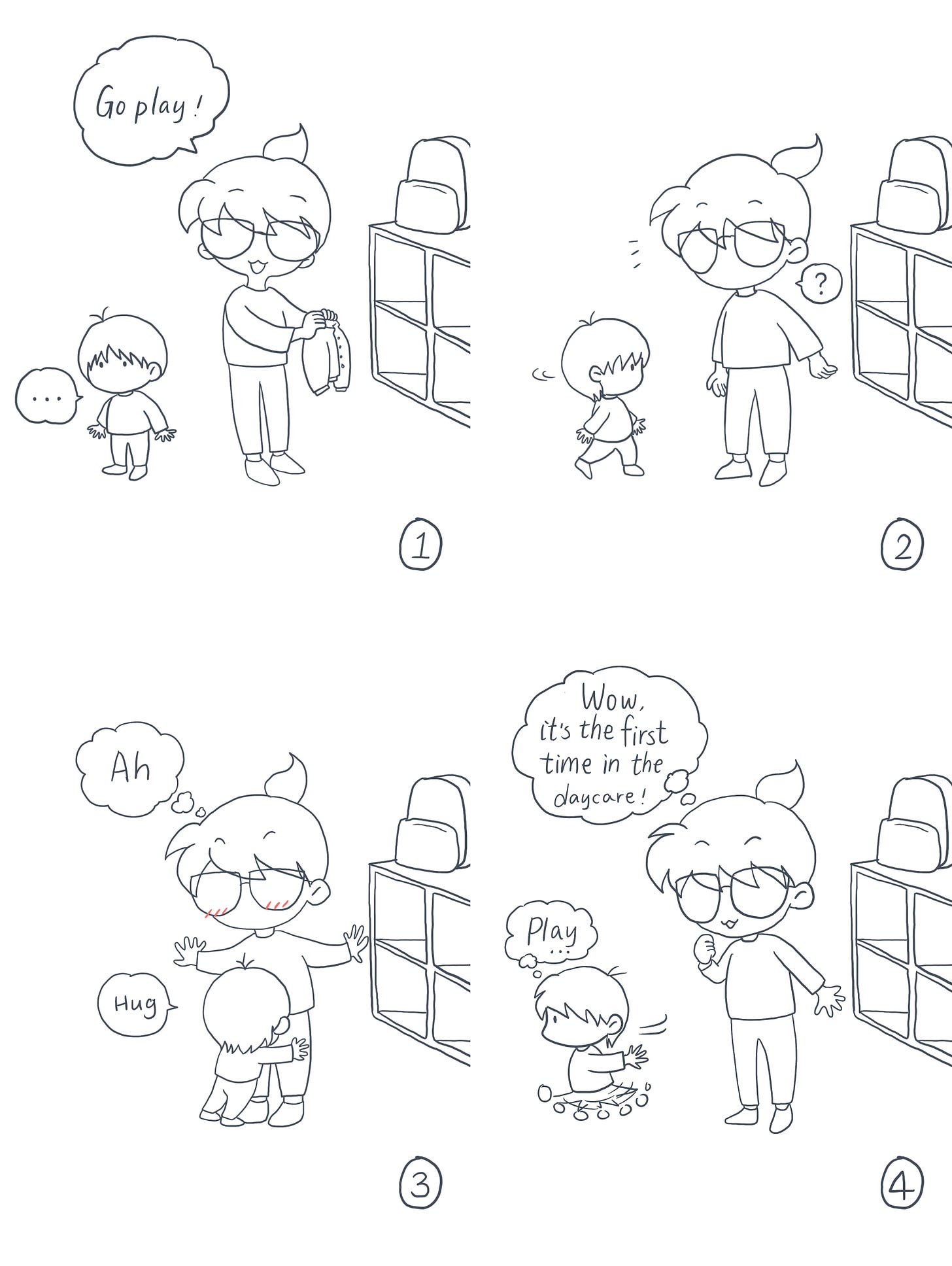Memolines ~ My baby's journey at daycare: from tears to hugs
As parents, we need to understand our children's worries and anxieties, walking alongside them through this phase, helping them become confident and independent.
I've decided to start drawing little sketches to capture those precious moments in life that a camera just can't quite catch.
These past few days, I noticed something heartwarming in my little one. Not long ago, she would cry every time I left her at school, and the teacher would have to carry her away, distracting her with toys. But recently, she's started walking into the classroom by herself. What's even more touching is that she now turns back for a hug, says "Hug," and then runs off to play. Seeing this change in her fills my heart with joy.
The beginning of daycare
When my baby turned one, we started sending her to daycare. At this age, babies already experience separation anxiety, so we worked out a plan with the teachers: for the first two weeks, we'd leave her for just an hour, gradually extending it to two hours, then half a day, and finally a full day.
As expected, she would cry loudly when we left at first. A few days in, I saw her wandering around the classroom with her doll while other kids played with the teachers. I wondered how long it would take for her to feel at home in this new environment.
I chatted with another parent who shared that their child also took several months to adjust. Sometimes, after a long holiday break, their child would see others crying and think, "Oh, I should be crying too!" and the adjustment process would start all over again.
Gradual changes
After a month or two, though she would still cry when we left, she'd walk calmly to us at pickup time. One day, she was having so much fun on the playground that she didn't want to come back inside - a sign she was starting to like school.
Later on, her reactions to our departures changed from crying to little grumbles. At pickup time, she'd get excited. The teachers told me she that recognizes our car and would wait by the window, waving happily when she saw us coming. Sometimes, she'd even have her hat on ready to go when I walked in.
Ups and downs
Things were going smoothly for a while, with her settling into her seat and playing with toys. But one day, just as we were about to enter the classroom, she saw an older boy crying and clinging to his dad's leg. She immediately copied him - it was as if she thought, "Oh, I can cry like that too!" For the next few weeks, we went through daily meltdowns again. Though it was frustrating, the teachers were always quick to help, distracting her with toys until she happily played along.
About six months in, the teachers told me she had started calling her classmates by name. On our drive home, we'd often practice saying her classmates' names together. Her baby voice made these naming sessions especially fun.
Learning from growth
Children need time to build trust in new environments, more so than adults do. Their anxiety and unease are natural parts of growing up. This adjustment period might be short for some and longer for others. As parents, we need to understand their worries and anxieties, walking alongside them through this phase, helping them become confident and independent.


